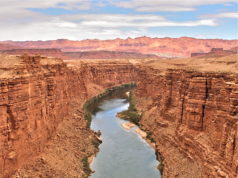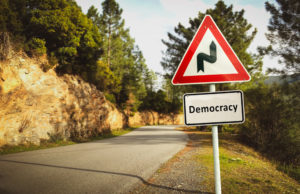— Top executives from three companies involved in the Deepwater Horizon
oil rig disaster will face a barrage of questions on Tuesday from angry
senators eager to make it clear they intend to hold someone responsible
for a blowout that killed 11 and continues to spew 210,000 gallons of
oil each day into the
But it’s also clear the three companies will have another source of finger-pointing — each other.
In testimony released Monday before the first of Tuesday’s two
In his testimony, submitted to the
disaster: What caused the explosion and fire, and why did the blowout
preventer fail? He makes it clear
“The systems are intended to fail-closed and be
fail-safe; sadly and for reasons we do not yet understand, in this
case, they were not,” McKay is to testify. “
That directly counters
“Over the past several days, some have suggested
that the blowout preventers used on this project were the cause of the
accident,” Newman is expected to testify. “That simply makes no sense.”
Their investigative team has looked at numerous
possible causes, Newman will say, but the company’s blowout preventers
“were clearly not the root cause of the explosion.” The well had been
sealed with casing and cement, and within a few days, the blowout
preventers would have been removed, anyway, he will say. At that point,
the cementing and casing were responsible for controlling any pressure,
he says in his testimony.
Although Newman does not single out
was the cementing subcontractor and as such “is responsible for
encasing the well in cement, or putting a temporary cement plug in the
top of the well, and for ensuring the integrity of the cement.”
has a different take, and points back to BP in his prepared testimony.
The well owner is ultimately responsible, said Probert, who is the
president of the company’s global business lines and its chief health,
safety and environmental officer.
“I need to start this section with an important statement of disclosure,” he is expected to testify. “
as a service provider to the well owner, is contractually bound to
comply with the well owner’s instructions on all matters relating to
the performance of all work-related activities.”
“It is also important to understand the roles and
responsibilities of the various parties involved in the construction of
a well,” he added. “The construction of a deep water well is a complex
operation involving the performance of numerous tasks by multiple
parties led by the well owner’s representative, who has the ultimate
authority for decisions on how and when various activities are
conducted.”
Meanwhile, BP is struggling to find a way to stop
the flood of oil following its failed effort to place a 78-ton steel
and concrete cap the size of a four-story house over the pipe. Company
officials on Monday announced engineers would try to put a smaller “top
hat” over the main leaking pipe as early as Thursday. If it is
successful, the company would pump the captured oil to a barge.
While they continue to look for a solution to stop the oil, government regulators are investigating the incident. President
Regardless of who’s to blame for the accident, McKay
said in his prepared testimony that he wishes to underscore the
company’s “intense determination to do everything humanly possible to
minimize the environmental and economic impacts of the resulting oil
spill on the
Already, the company has mobilized a fleet of 294
response vessels and has recovered more than 97,000 barrels of
oil-and-water mix from the sea, McKay said in his statement.
“BP is under no illusions about the seriousness of
the situation we face,” he said. “In the last three weeks, the eyes of
the world have been upon us.
members of his Cabinet have visited the Gulf region and made clear
their expectations of BP and our industry. So have members of
———
(c) 2010, McClatchy-Tribune Information Services.
Visit the














